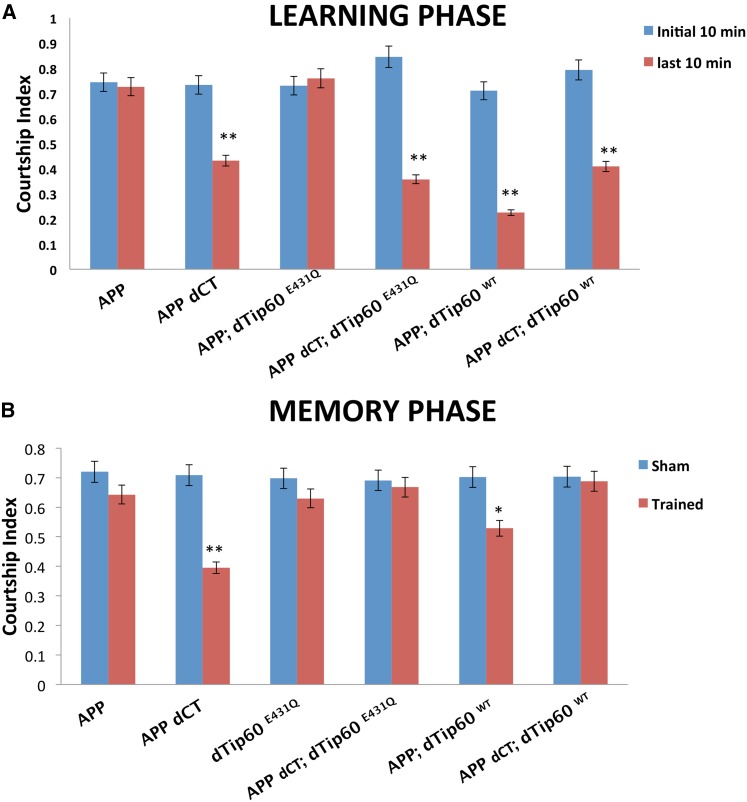Figure 9.
Increased level of Tip60 HAT activity rescues learning and memory deficits under APP-induced neurodegenerative conditions. (A) Learning during the initial 10 min (blue columns) and final 10 min (red columns) of the training phase during the courtship suppression assay. Genotypes are indicated. Flies expressing either hAPP or co-expressing equivalent levels of hAPP with HAT mutant dTip60E431Q exhibit no marked decrease in courtship during final 10 min compared to intitial 10 min, indicative of learning defects. Flies co-expressing hAPP with dTip60WT exhibit marked decrease in courtship index during final 10 min compared to the initial 10 min, indicative of normal learning response. Flies expressing either hAPP dCT or co-expressing and hAPPdCT; dTip60E431Q exhibits marked decrease in courtship index during final 10 min compared to initial 10 min, indicating that learning effects are dependent upon the C-terminal of hAPP. (B) Immediate-recall memory (0–2 min post-training) of trained males compared to untrained (sham) males of the same genotype. Both hAPP and hAPP;dTip60E431Q flies show no significant difference between trained and sham males, indicative of no immediate-recall memory, while hAPP; dTip60WT show significant difference, indicative of memory rescue. hAPP dCT with dTip60E431Q and dTip60WT flies shows no significant difference between trained and sham males, indicative of no immediate recall of training. Error bars represent 95% confidence interval. A single asterisk indicates P < 0.05 and a double asterisk indicates P < 0.001 compared with sham males. n = 20 for trained and untrained males in each genotype.

